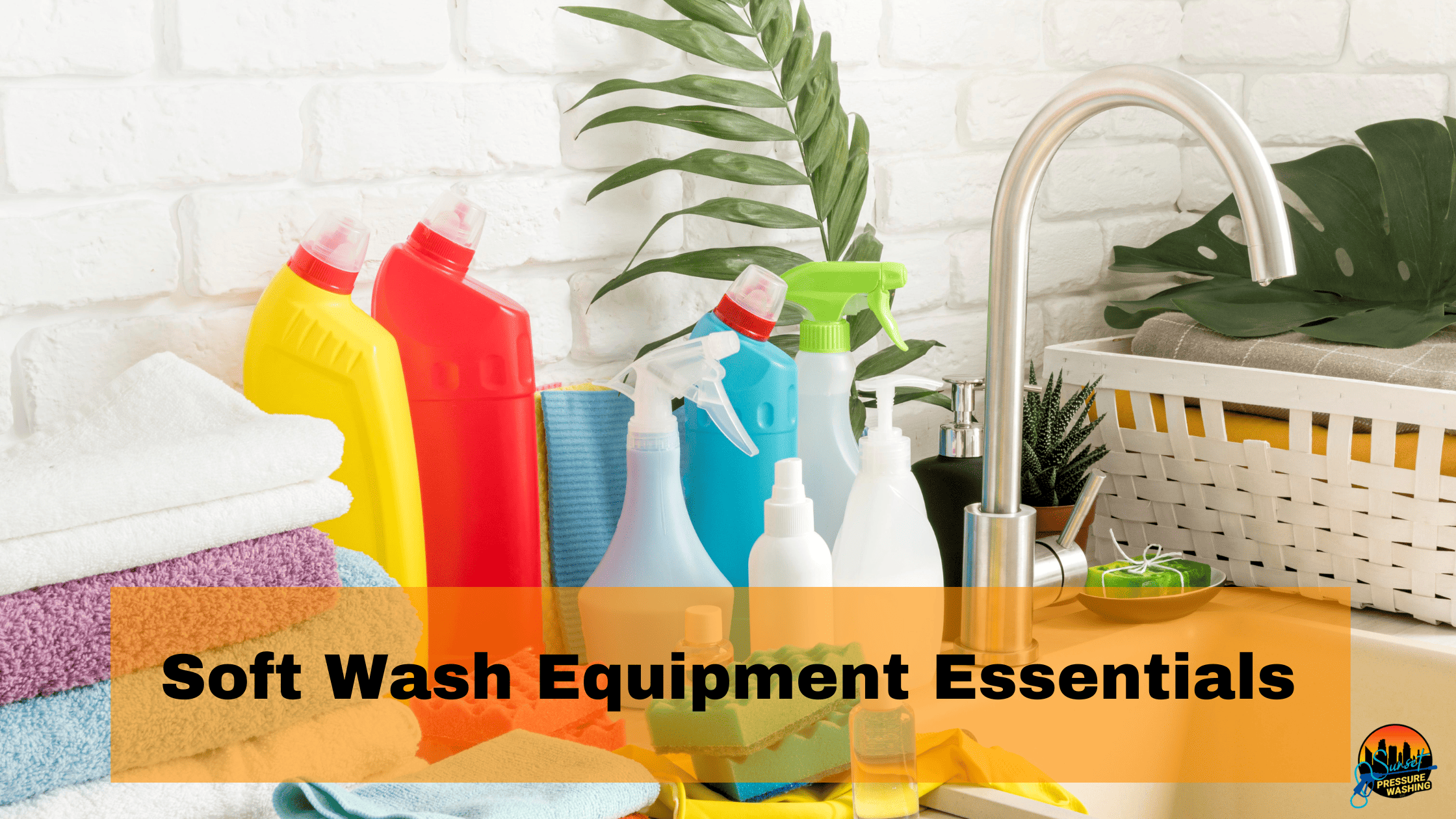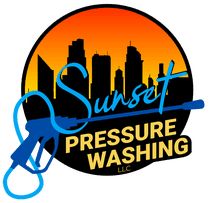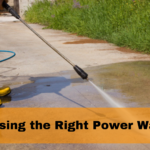
Soft Wash Equipment Essentials
Soft washing is an innovative cleaning method that uses low-pressure water combined with specialized cleaning solutions to effectively and gently clean exterior surfaces. It’s ideal for surfaces like roofs, siding, and decks, which could be damaged by high-pressure washing. For those looking to start in this field or enhance their soft washing setup, understanding the essential equipment is crucial. In this blog, we’ll cover the essential equipment needed for soft washing and conclude with an introduction to Sunset Pressure Wash, a leader in the industry.
Soft Wash Systems
The core of any soft washing setup is the soft wash system itself. These systems are ingeniously designed to clean surfaces effectively without the high pressure used in traditional pressure washing. Here’s what you need to know about soft wash systems, their components, and how they function:
Key Components
- Pump: The pump is the heart of the soft wash system. It’s designed to operate at lower pressures (around 40-500 PSI) compared to traditional pressure washers. This lower pressure ensures that surfaces are cleaned without the risk of damage.
- Storage Tank: The storage tank holds the water and cleaning solutions. Capacity varies based on the system, ranging from small, portable tanks for light work to large tanks for extensive commercial jobs.
- Mixing System: Many soft wash systems include a mixing system or proportioner that automatically mixes water with cleaning chemicals in the correct ratios. This feature ensures consistent and effective cleaning results while minimizing chemical waste.
- Hoses and Reels: Quality hoses are essential for delivering the cleaning solution to the target surface. Hoses should be durable and able to withstand the chemicals used in soft washing. Reels help in managing these hoses, making them easier to handle and store.
- Control System: This includes the valves and switches that control the flow and mixture of the solution. Advanced systems may have electronic controls for precision and ease of use.
Types of Soft Wash Systems
- Portable Systems: Ideal for residential use or smaller jobs, portable systems are compact and easy to transport. They typically have smaller tanks and are perfect for locations with limited space.
- Skid-mounted Systems: These are larger and designed for commercial use. Skid-mounted systems are often installed in a trailer or truck bed, offering greater capacity and efficiency for larger jobs.
- Custom-built Systems: For specific needs or large-scale operations, custom-built systems can be designed. These systems are tailored to the user’s requirements regarding tank size, pump capacity, and additional features.
Benefits of Using Soft Wash Systems
- Safety for Delicate Surfaces: The low pressure is gentle on surfaces like roof shingles, wood siding, and delicate landscaping.
- Effective Cleaning: Despite the low pressure, these systems are highly effective at removing mold, algae, dirt, and other buildups, thanks to the combination of specialized cleaning solutions.
- Environmentally Friendly: Many systems are designed to be eco-friendly, using biodegradable chemicals and reducing water usage compared to traditional pressure washing.
- Versatility: With adjustable chemical mixtures and various nozzle options, soft wash systems can be adapted for a wide range of surfaces and cleaning requirements.
Cleaning Solutions
The effectiveness of soft washing largely depends on the cleaning solutions used. These solutions are specialized chemicals designed to clean various surfaces without causing damage. Understanding the different types of cleaning solutions and their appropriate use is key to successful soft washing.
Types of Cleaning Solutions
- Biocides and Algaecides: These are used to kill biological growths like algae, moss, and mold. They are essential for roof cleaning and other surfaces where organic growth is common.
- Surfactants: Surfactants help in reducing surface tension, allowing the cleaning solution to spread and penetrate more effectively. They are crucial for breaking down tough grime and ensuring an even clean.
- Detergents: Similar to household detergents but more potent, these are used for general cleaning purposes. They are effective in removing dirt, pollen, and other common types of surface grime.
- Degreasers: These are stronger chemicals designed to tackle oil, grease, and industrial pollutants. They are particularly useful for cleaning driveways, garages, and commercial properties.
- Bleach (Sodium Hypochlorite): Often used in roof cleaning, bleach can effectively kill mold, algae, and bacteria. It must be used carefully, with proper dilution and safety measures in place.
- Rust Removers: These solutions are used to address rust stains, commonly found on sidings and driveways.
Choosing the Right Cleaning Solution
- Surface Material: Consider the material of the surface you’re cleaning. Delicate surfaces require gentler solutions to avoid damage.
- Type of Stain: The nature of the stain (organic growth, grease, dirt) will dictate the choice of cleaning solution.
- Environmental Impact: Opt for eco-friendly and biodegradable chemicals whenever possible to minimize environmental harm.
Safety and Handling
- Personal Protective Equipment (PPE): Always wear appropriate PPE, such as gloves, goggles, and respirators, when handling chemical solutions.
- Proper Dilution: Follow manufacturer guidelines for diluting chemicals. Over-concentration can damage surfaces and pose health risks.
- Storage and Disposal: Store chemicals safely, away from children and pets, and dispose of them according to local regulations.
Nozzles and Tips
In the world of soft washing, the choice of nozzles and tips plays a pivotal role in determining the effectiveness and safety of the cleaning process. These components control the spray pattern and pressure of the cleaning solution, making them essential for precision and efficiency. Understanding the different types of nozzles and tips, and their specific applications, is crucial for any soft wash professional.
Types of Nozzles and Tips
- Fan Nozzles: These nozzles produce a fan-shaped spray pattern, ideal for covering large surface areas evenly. They are perfect for cleaning siding, decks, and other broad surfaces.
- Stream Nozzles: Stream nozzles deliver a more concentrated spray, suitable for targeting specific spots or for areas that require a more intensive cleaning.
- Variable Nozzles: These nozzles offer adjustable spray patterns, allowing the operator to switch between different patterns without changing the nozzle. They provide versatility and are useful for a variety of cleaning situations.
- Low-Pressure Nozzles: Specifically designed for soft washing, these nozzles ensure that the pressure remains low to avoid damage to delicate surfaces.
- J-Rod Nozzle Holders: These holders allow for quick and easy switching between different nozzles, increasing efficiency and reducing downtime during a job.
Selecting the Right Nozzle
- Surface Type: Consider the surface you are cleaning. Delicate surfaces like windows or old wood require nozzles that distribute pressure gently.
- Cleaning Task: The nature of the task – whether it’s removing stubborn stains or covering a large area – will influence the choice of nozzle.
- Distance from Surface: Some nozzles are better suited for close-up work, while others can reach higher or more distant surfaces.
Importance of Nozzle Maintenance
- Regular Cleaning: Nozzles can become clogged with debris or residues from cleaning solutions. Regular cleaning ensures consistent performance and prolongs their lifespan.
- Inspection for Wear and Tear: Over time, nozzles can wear out, especially when abrasive chemicals are used. Regular inspection and replacement when necessary are important to maintain efficiency.
Safety Considerations
- Pressure Control: Always use nozzles that are appropriate for the pressure rating of your soft wash system to avoid accidents and equipment damage.
- Spray Direction: Be cautious of the direction in which the nozzle is pointed to prevent accidental spraying of bystanders or damaging sensitive areas.
Hoses and Reels
In soft washing, hoses and reels are essential for efficiently delivering cleaning solutions to the target surfaces. Their quality and functionality can greatly impact the ease and effectiveness of the cleaning process. Let’s delve into the importance of hoses and reels in soft washing, their types, and maintenance tips.
Types of Hoses
Chemical Resistant Hoses: Since soft washing involves the use of various chemicals, it’s crucial to use hoses that are resistant to chemical damage. These hoses ensure longevity and safety.
Length and Diameter: The length of the hose should be chosen based on the size of the area being cleaned. A longer hose is needed for large properties, while a shorter one may suffice for smaller areas. The diameter affects the flow rate and pressure of the cleaning solution.
Flexibility and Durability: A good hose should be flexible enough to maneuver around corners and obstacles but also durable enough to withstand regular use and environmental factors.
Reels
- Manual vs. Automatic Reels: Manual reels require the operator to wind the hose back onto the reel, while automatic reels retract the hose with a mechanical or motorized system. The choice depends on budget and preference.
- Capacity: The reel must be capable of holding the length and diameter of the hose being used. It’s important to ensure the reel is neither too small nor too large for the hose.
- Portability and Mounting: Some reels are designed to be portable, while others can be mounted on vehicles or trailers. The choice depends on the nature of the soft washing work and the setup of the equipment.
Maintenance Tips
- Regular Cleaning: Hoses should be flushed out after each use to prevent the buildup of chemical residues, which can degrade the hose material over time.
- Proper Storage: Store hoses away from direct sunlight and extreme temperatures to prevent deterioration. Ensure they are properly coiled or reeled to avoid kinks and bends.
- Inspection for Damage: Regularly inspect hoses for signs of wear, such as cracks or leaks, and replace them if necessary to maintain safety and efficiency.
- Reel Care: Lubricate the moving parts of the reel as needed and check for any rust or corrosion, especially if the reel is exposed to harsh environments.
Importance in Soft Washing
- Efficiency: Properly functioning hoses and reels make the cleaning process more efficient, saving time and effort.
- Safety: Using the right hoses and reels reduces the risk of accidents, such as trips and falls, and prevents hose damage, which can lead to leaks and exposure to chemicals.
- Professionalism: A well-maintained hose and reel system enhances the professional image of a soft washing business and demonstrates a commitment to quality.
Safety Equipment
In the realm of soft washing, prioritizing safety is as important as achieving a thorough clean. The use of safety equipment is essential to protect both the operator and the environment from the potential hazards associated with handling cleaning chemicals and equipment. Here’s a comprehensive guide on the necessary safety equipment for soft washing.
Personal Protective Equipment (PPE)
- Protective Gloves: Chemical-resistant gloves protect hands from harsh cleaning solutions and prevent skin irritation or burns.
- Safety Goggles: To shield eyes from chemical splashes and airborne particles, safety goggles are a must. They should fit snugly and be compatible with other PPE.
- Respirators or Face Masks: When working with strong chemicals, especially in enclosed areas, respirators or face masks are crucial to avoid inhaling fumes.
- Protective Clothing: Long-sleeved shirts and long pants made of chemical-resistant material can prevent skin contact with harmful chemicals. In more hazardous conditions, full-body suits may be necessary.
- Non-Slip Shoes: Waterproof and non-slip shoes ensure safety from slipping on wet surfaces, a common hazard in soft washing.
Environmental Safety Gear
- Containment Mats: These mats collect runoff from the cleaning process, preventing chemicals from seeping into the soil or storm drains, which is crucial for environmental protection.
- Warning Signs: Placing warning signs around the work area can alert passersby and prevent accidental exposure to chemicals or tripping hazards.
Equipment Safety
- Hose Guards: Hose guards or sleeves can prevent wear and tear on hoses, reducing the risk of leaks and bursts.
- Pressure Regulators: These devices help in maintaining a safe and consistent pressure level, preventing accidents due to over-pressurization.
- Chemical Storage and Handling: Proper storage and handling of chemicals are vital. This includes using clearly labeled and leak-proof containers and storing them in a cool, dry place.
Training and Knowledge
- Proper Training: Operators should be trained not only in using the equipment but also in safety procedures and first-aid measures in case of accidents.
- Understanding Material Safety Data Sheets (MSDS): Familiarity with MSDS for each chemical used is important for knowing the specific risks and safety measures.
Emergency Preparedness
- First Aid Kit: Always have a first aid kit readily available for immediate treatment of minor injuries.
- Emergency Plan: Develop an emergency response plan in case of accidental exposure or spills, including contact information for local emergency services.
Surface Cleaners
Surface cleaners are an integral part of the soft wash equipment arsenal, especially when dealing with large flat surfaces like driveways, patios, and sidewalks. These tools enhance the efficiency and effectiveness of the cleaning process, ensuring a uniform and thorough clean. Let’s explore the role of surface cleaners in soft washing, their types, and their benefits.
What Are Surface Cleaners?
Surface cleaners are attachments designed for cleaning large flat surfaces. They consist of a housing unit that contains spinning nozzles which distribute the cleaning solution evenly across the surface. These attachments are connected to the soft wash system and glide over the surface, providing a consistent and even clean.
Types of Surface Cleaners
- Rotary Surface Cleaners: These are the most common type, featuring rotating arms beneath a round enclosure. They are efficient for cleaning large areas quickly.
- Wand-Style Surface Cleaners: These resemble traditional wands but have a specialized nozzle at the end for even distribution of cleaning solution. They offer more control and are suitable for smaller or more intricate areas.
- Adjustable Surface Cleaners: Some models allow for adjustments in pressure and flow, making them versatile for different types of surfaces and levels of dirt.
Benefits of Using Surface Cleaners
- Efficiency: Surface cleaners cover large areas quickly, significantly reducing cleaning time compared to traditional methods.
- Uniform Cleaning: They provide a consistent clean without streaks or lines, which can be a challenge with regular nozzles.
- Reduced Strain: Using a surface cleaner is less physically demanding than using a wand for extended periods, reducing operator fatigue.
- Less Splashback: The enclosed design minimizes splashback, keeping the surrounding areas dry and clean.
Choosing the Right Surface Cleaner
- Size and Compatibility: Ensure the surface cleaner is compatible with your soft wash system regarding pressure and flow rate. The size should be appropriate for the areas you typically clean.
- Quality of Construction: Look for durable materials and robust construction to withstand regular use and exposure to chemicals.
- Ease of Use: Consider features like weight, maneuverability, and ease of maintenance.
Maintenance Tips
- Regular Cleaning: Flush out any residual cleaning solution after use to prevent clogging and corrosion.
- Check for Wear: Regularly inspect nozzles and moving parts for wear and tear. Replace parts as needed to maintain efficiency.
- Lubrication: Keep moving parts lubricated according to the manufacturer’s recommendations.
Pump and Compressor
In the realm of soft washing, the pump and compressor are vital components that power the entire system. Understanding their roles, types, and maintenance needs is crucial for ensuring a smooth and efficient soft washing operation. Let’s dive into the details of these essential pieces of equipment.
Regular Maintenance
- Pressure Regulation: The pump is responsible for generating the low pressure needed in soft washing. Unlike high-pressure systems, soft wash pumps are designed to deliver cleaning solutions at a lower PSI (pounds per square inch), which is gentle on surfaces but effective in cleaning.
- Solution Delivery: Pumps also play a crucial role in delivering the mixed water and cleaning solution from the storage tank to the hoses and nozzles.
Types of Pumps
- Diaphragm Pumps: These are the most common type of pumps used in soft washing. They are durable, can handle a variety of chemicals, and are capable of running dry without damage.
- 12-Volt Pumps: Ideal for smaller or portable systems, these pumps are powered by a 12-volt battery, making them convenient for on-the-go operations.
- Gas-Powered Pumps: For larger jobs requiring more power and longer usage, gas-powered pumps are a popular choice. They offer higher flow rates and longer durability.
The Role of Compressors
- Power Source: In some soft wash systems, especially those that use air-driven diaphragm pumps, a compressor acts as the power source. It provides the necessary air pressure to drive the pump.
- Versatility: Compressors can also be used for other tasks in soft washing operations, such as powering pneumatic tools or inflating tires of the service vehicle.
Choosing the Right Pump and Compressor
- Capacity Matching: Ensure that the pump’s flow rate and pressure capabilities match your soft washing needs. Similarly, the compressor should provide adequate airflow and pressure for your pump.
- Chemical Compatibility: Check that the materials of the pump and compressor are compatible with the chemicals you plan to use.
- Portability and Size: Consider the size and weight if you require a portable system, especially for residential jobs or hard-to-reach areas.
Maintenance Tips
- Regular Cleaning: Flush the pump with clean water after each use to prevent buildup of chemical residues.
- Regular Inspections: Check for leaks, wear, and tear regularly. Look for signs of corrosion or damage, especially in parts exposed to chemicals.
- Lubrication and Air Filter Maintenance: For compressors, regular lubrication and air filter maintenance are key to ensuring longevity and efficient operation.
- Winterization: If operating in a cold climate, ensure that the pump and compressor are properly winterized to prevent damage from freezing temperatures.
Water Tanks
Water tanks are a fundamental component of the soft washing system, serving as the reservoir for the water and cleaning solutions. Choosing the right water tank and maintaining it properly can significantly impact the efficiency and effectiveness of your soft washing operations. Let’s explore the importance, types, and maintenance of water tanks in soft washing.
Importance of Water Tanks in Soft Washing
- Storage Capacity: Water tanks hold the necessary amount of water and cleaning solutions, determining how much area you can clean before needing a refill. This is crucial for managing large jobs or working in areas without direct water access.
- Mobility and Accessibility: The size and design of the tank affect the mobility of the soft wash system, especially for services offered at different locations.
- Mixing of Solutions: Some tanks are designed with systems that allow for the mixing of water and cleaning solutions directly within the tank, ensuring a consistent and effective cleaning mixture.
Types of Water Tanks
- Portable Tanks: Ideal for smaller jobs or tight spaces, portable tanks are smaller in capacity and can be easily moved around.
- Static Tanks: Larger in size, these tanks are designed for stationary use, often in a fixed installation or on a trailer. They are suitable for large-scale or regular soft washing jobs.
- Truck-Mounted Tanks: For professionals who need to travel to various locations, truck-mounted tanks offer a balance between capacity and mobility.
- Material: Water tanks are typically made from polyethylene or other durable materials that are resistant to corrosion and the chemicals used in soft washing.
Selecting the Right Water Tank
- Capacity Needs: Consider the average size of your cleaning jobs to determine the required tank capacity.
- Type of Vehicle or Trailer: Ensure the tank is compatible with your vehicle or trailer in terms of size and weight capacity.
- Chemical Compatibility: Verify that the tank material is compatible with the cleaning solutions you will use.
Maintenance and Care
- Regular Cleaning: After each use, especially if different chemicals are used, clean the tank to prevent residue build-up and contamination.
- Inspection for Leaks and Damage: Regularly inspect the tank for any leaks, cracks, or signs of wear that could lead to spills or contamination.
- Proper Installation: Ensure that the tank is securely installed to prevent movement during transportation, which can lead to damage or accidents.
- Winterization: In colder climates, take measures to prevent the freezing of liquids in the tank, which can cause damage.
Training and Knowledge
Training and knowledge form the backbone of a successful soft washing business. While having the right equipment is essential, knowing how to use it safely and effectively is what sets a professional apart. In this section, we’ll discuss the importance of training and knowledge in soft washing, and the key areas you should focus on.
Importance of Training in Soft Washing
- Effective Cleaning Techniques: Understanding the best practices for soft washing ensures that you can clean surfaces effectively without causing damage.
- Chemical Handling and Safety: Proper training in handling chemicals is crucial for safety. It includes knowing how to mix, apply, and dispose of cleaning solutions correctly.
- Equipment Operation and Maintenance: Knowing how to operate and maintain your equipment extends its lifespan and prevents breakdowns during jobs.
- Adherence to Regulations: Training helps in staying compliant with local environmental and safety regulations.
Key Training Areas
- Soft Wash System Operation: Learn the ins and outs of your specific system, including how to adjust pressure, mix cleaning solutions, and manage flow rates.
- Chemical Safety and Application: Understand the properties of different chemicals, how they interact with various surfaces, and the safety protocols for handling them.
- Surface Analysis: Training in identifying different types of surfaces and the appropriate cleaning methods for each is essential to avoid damage.
- Customer Service: Soft washing professionals often interact directly with clients, so customer service training can enhance client satisfaction and lead to repeat business.
Acquiring Training
- Certification Programs: Look for certification courses specific to soft washing. These can provide comprehensive training and a certificate to showcase your expertise.
- Online Resources: Utilize online tutorials, webinars, and forums. Many experienced professionals share valuable insights online.
- Manufacturer Training: Some equipment manufacturers offer training sessions on the proper use of their products.
- On-the-Job Training: Working with an experienced soft washer can provide practical, hands-on experience.
Staying Updated
- Continued Education: Soft washing techniques and regulations can evolve. Staying updated through continuous learning is important.
- Networking: Joining professional associations and attending industry events can provide access to the latest trends and techniques.
Customer Service and Marketing
In the soft washing business, delivering exceptional customer service and implementing effective marketing strategies are as crucial as the technical aspects of the job. These elements help in building a strong reputation, attracting new customers, and retaining existing ones. Let’s explore how to excel in customer service and marketing in the soft washing industry.
Excelling in Customer Service
Understanding Client Needs: Listen carefully to your clients’ concerns and preferences. Tailoring your services to meet their specific needs can significantly enhance satisfaction.
- Professionalism: Always conduct business professionally, which includes punctuality, politeness, and presenting a clean and organized work area.
- Clear Communication: Keep clients informed about the process, any potential issues, and the progress of the work. Transparency builds trust.
- After-Service Follow-Up: Check in with clients after the job to ensure they are satisfied. This can lead to repeat business and referrals.
- Handling Complaints Gracefully: Address any complaints promptly and efficiently. Viewing them as opportunities for improvement can enhance your service quality.
Marketing Strategies
- Branding: Develop a strong brand identity, including a memorable logo and uniform, to make your business easily recognizable.
- Digital Presence: Invest in a professional website and maintain active social media profiles. Before and after photos of your work can showcase your expertise.
- Search Engine Optimization (SEO): Optimize your website for search engines to increase visibility to potential clients searching for soft washing services online.
- Local Advertising: Utilize local advertising channels, such as community boards, local newspapers, and direct mail campaigns.
- Referral Programs: Encourage word-of-mouth marketing by offering incentives for referrals from existing customers.
- Partnerships: Collaborate with local businesses, like landscaping or home improvement companies, to expand your customer base.
Leveraging Online Reviews
- Encourage Satisfied Clients to Leave Reviews: Positive online reviews can significantly boost your business’s credibility.
- Monitor and Respond to Reviews: Regularly check your reviews and respond to them, showing potential clients that you value feedback.
- Staying Engaged with the Community: Community Involvement: Participating in local events or charity causes can increase your visibility and establish your business as a community-friendly entity.
- Educational Content: Share your expertise by creating informative content about soft washing, which can position you as an authority in the field.
Take Action with Sunset Pressure Wash: Explore, See, and Book Today!
As we have explored the various facets of soft wash equipment and techniques, it’s clear that professional expertise is key to achieving the best results. This is where Sunset Pressure Wash comes into the picture, exemplifying top-tier service in the field of soft washing.
Explore Our Services:
Visit Sunset Pressure Wash Services to learn more about the range of services we offer. From roof cleaning to deck revitalization, we have the expertise to handle it all.
See the Difference:
Curious about the impact of our work? Head over to Sunset Pressure Wash to view before-and-after photos, testimonials, and detailed explanations of our process. Witness firsthand how we transform properties!
Book a Service:
Ready to rejuvenate your property? Scheduling a service is just a click away. Book Sunset Pressure Washing to select a convenient time for your soft washing needs. Their user-friendly booking system ensures a hassle-free experience.






